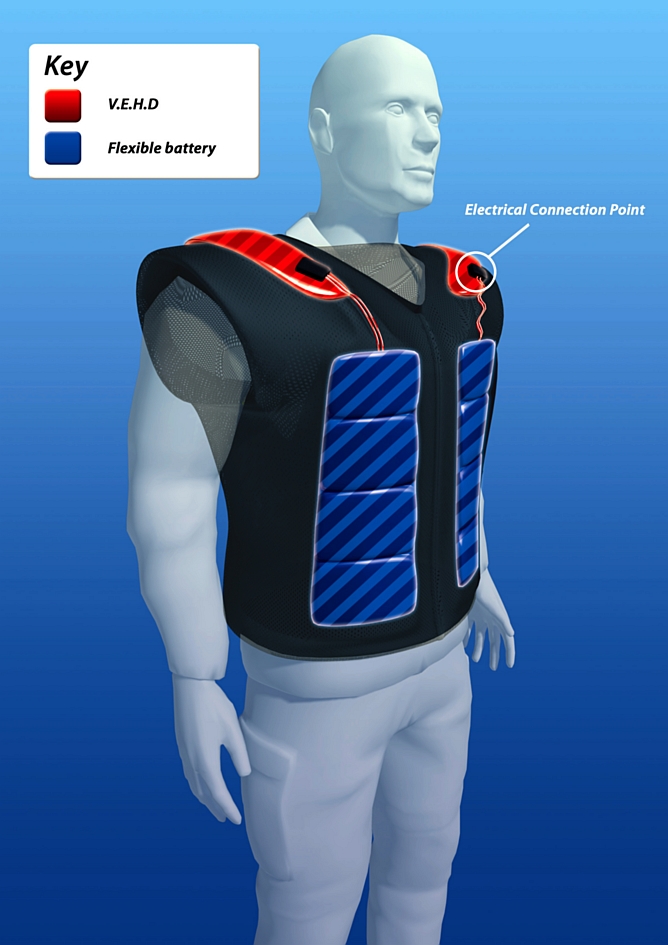Motion-charged soldier battery shapes up

Defence, in collaboration with the CSIRO, is close to equipping Australian soldiers with a flexible battery that recharges itself as the soldier moves.

The battery consists of an energy harvester and flexible battery. (Credit: CSIRO)
The Flexible Integrated Energy Device has two halves to harvest energy from the wearer's movements and store it in a flexible, robust and wearable battery.
The research teams had been working on the two halves of the device separately since the project was announced over three years ago. It is only now that those halves have been connected to create a working device.
The first half involved the development of an energy harvesting device.
"The Vibration and Energy Harvesting Device (VEHD) is like a transducer, or a mechanical actuator, or an electronic servo motor, which we can mount into the soldier's equipment, and we can actually harvest mechanical motion and turn it into electrical energy either to run equipment or to store it in the battery," said CSIRO research scientist Dr Adam Best.
Field trials that were run last year aimed to determine the best location to place the generator on a soldier to optimise energy generation. By mounting devices on different places, researchers developed an electronic "force profile", which could be loaded into a computer to drive a simulation.
"Using our simulation rigs, we were able to take real materials and then subject them to that force profile to work out what would be the type of energy we could generate from piezoelectric transducers and the like," said Best.
During the trials, researchers were able to generate 87 microwatts per kilogram of force. However, limitations in robustness and the inability to perform under high temperatures led CSIRO's research towards using electronic servo motor technology, instead of piezoelectric transducers. The organisation is now planning to patent the electronic servo motor technology.
In the past six months, CSIRO has been able to increase its harvesting capacity to 200 milliwatts per kilogram of force by using the servo motors, providing enough power to run a soldier's personal communication devices in the field for a 72-hour rotation once coupled with battery storage.
The other half of the project concerns the batteries, which are the first in the world to be flexible, providing improved mobility to Australian soldiers.
"All current batteries impede movement because they're solid, fixed objects. You can't conform them in any way to shape to the body or put them away in places unobtrusively. In that regard, you actually have to carry two heavy lumps of battery," said Best.
The batteries are built by coating conductive metal layers into textiles such as wool or cotton and using special electrolytes in place of conventional materials found in mobile or laptop batteries.
"You can't use standard battery electrolytes as they're highly toxic, highly flammable and highly volatile. So we've been using a class of electrolytes known as ionic liquids to give it that level of safety that otherwise wouldn't be available," said Best.
The batteries have been in testing for the past six months, to assess robustness and charging cycles. According to Defence Science and Technology Organisation (DSTO) researcher, Dr Vinod Puri, they can be scaled in size to provide 100Wh/kg.
Once the technology is fully developed, CSIRO expects there to be a range of civilian applications for the device, such as communication devices, vital sign monitoring systems, small electronic devices such as MP3 players, and sports wear.
The research is fully funded under the Capability and Technology Demonstrator Program, run by the DSTO.